Kimono is the traditional Japanese clothing. Until the introduction of Western culture to Japan, Japanese people wore kimono.
Today, the number of people who wear kimono daily is decreasing, but there are still many kimono-lovers. It has a wide range of prices, and expensive ones cost a few million yen. Therefore, many kimonos have been passed down from mother to daughter as a bride’s household article.
This time, we would like to introduce the history and culture of kimono, how to wear kimono and the kimono rental service for foreigners.
History and Types of Japanese Kimono
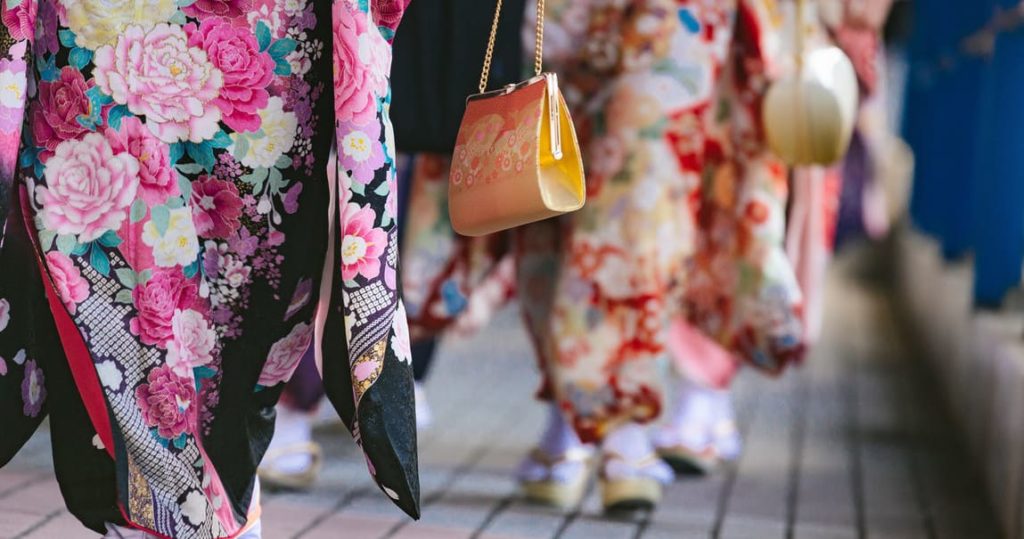
Kimono in Japan is a traditional Japanese costume that has been worn for a long time and is also called 和服(wafuku).
There are a wide variety of items, from simple to gorgeous, and since it is a woven fabric, the more time and effort is spent, the higher the value.
The kimono became the most glamorous in the Heian period, and the aristocrats wore kimonos of different gorgeousness depending on their rank. By the time the textile industry flourished, characteristic techniques, such as Nishijin weaving and Yuzen dyeing in Kyoto, were developed and became traditional cultures.
In modern times, many people wear kimonos only on special occasions and celebrations, but it is an important culture for Japanese people.
Kinds of kimono are divided into several types depending on the situation of wearing, such as 黒留袖(kuro-tomesode), 振袖(furisode), 色留袖(iro-tomesode), 訪問着(hōmongi), 付け下げ(tsukesage), 色無地(iro-muji), 小紋(komon), 袖(sode), 浴衣(yukata), and 喪服(mofuku).
The Difference between Kimono and Yukata
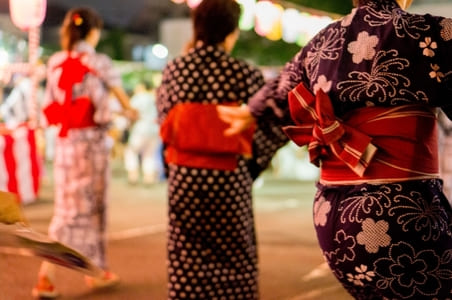
Some foreigners may think that kimono and yukata are the same things. Yes, a yukata is a type of kimono, but there are distinct differences.
Simply put, a yukata is a “thin kimono for summer.” Yukata is a kind of kimono that emphasizes coolness because it is made of light materials such as cotton, linen, and polyester. It looks the same as a kimono, but the thickness of the cloth and the number of clothes to wear are different.
When you wear kimono, you will put on an undershirt called “襦袢(juban)” on top of underwear, but in case of a yukata, you can wear it directly on top of the underwear.
Also, while kimono is formal wear, yukata is not suitable for a formal occasion. It is similar to the modern room wear and sleepwear. People used to wear yukata when they spend time at home or after taking a bath.
Even now, you can see the culture of wearing yukata after taking a bath in Japanese hotels, inns, and hot spring facilities. Many of the lodgings have colorful yukatas, so if you see them, please try wearing them.
In the summer, there is a culture of wearing yukata at fireworks festivals and other festivals in Japan. Even among foreigners, more and more people are walking in the city wearing yukata, which is easy to wear.
How to Wear Kimono
We will introduce how to wear kimono. If you would like to check it in the video, please refer to the below.
Please wear socks first, as it is very hard to lean forward after tying the obi. After that, put on your underwear, put a towel on the waist, and tie it with a string. By eliminating the step between the waist and hips, you can prevent the clothes become loose and improve their appearance.
Next, wear 襦袢(juban). This step will determine the beauty after wearing, so wear it while adjusting the shape.
Next, put on a kimono and tie it with a waist strap. After that, dress up the kimono and fasten it with a small item called 伊達締め(datejime).
Finally, tie the obi. There are various types of tying the obi. The obi of 振袖(furisode,) which is kimono used by unmarried women, is often tied in a way that looks like a ribbon.
At present, many people wear furisode at an adult ceremony and weddings. In the case of kimonos that are not furisode, the volume of the obi is not so much, and the shape of the knot is close to a square.
Places Where You Can Rent and Dress Kimono
There are many places where you can rent and wear kimonos around Asakusa in Tokyo and the city in Kyoto or Nara.
If you feel that buying kimonos is expensive or it is difficult to wear them yourself, then you should try these services.
Rika-Wafuku (梨花和服)
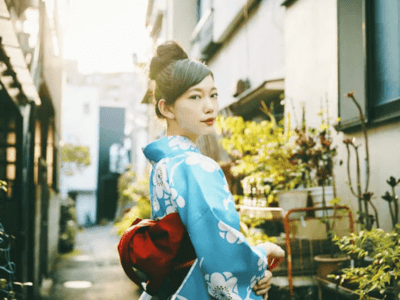
Kyoto is the main store for Rika-Wafuku, but there are also stores in Asakusa, Tokyo. In addition to kimono rental, plans with hair set and couple plans are also available.
Staffs who speak English, Chinese, or Korean are also there, so even foreigners can easily try.
Waraku (和楽)
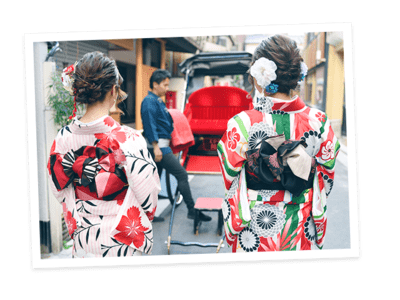
It is a kimono rental shop in Asakusa, which is available for foreigners too. A wide range of plans, such as group plans and couple plans are available.
Uruwashiki (うるわしき)
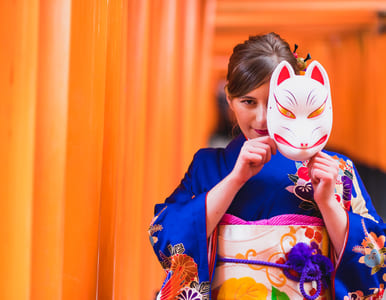
Uruwashiki is a kimono rental shop near Fushimi Inari, which is visited by many foreigners. They also offer kimono dressing classes for foreigners.
Not only foreigners but also Japanese rent kimonos and walk around the city. Therefore, if you search on the Internet, there are many shops that can rent and dress kimonos in every town. There is also an advantageous plan that comes with a hair set and a photoshoot.
Conclusion
This time, we introduced Kimono, which is a traditional Japanese culture and a folk costume. It is very beautiful, and its impression and price change greatly with only one dyeing and embroidery.
It’s hard to wear, but it’s a special outfit, so please try it out.



